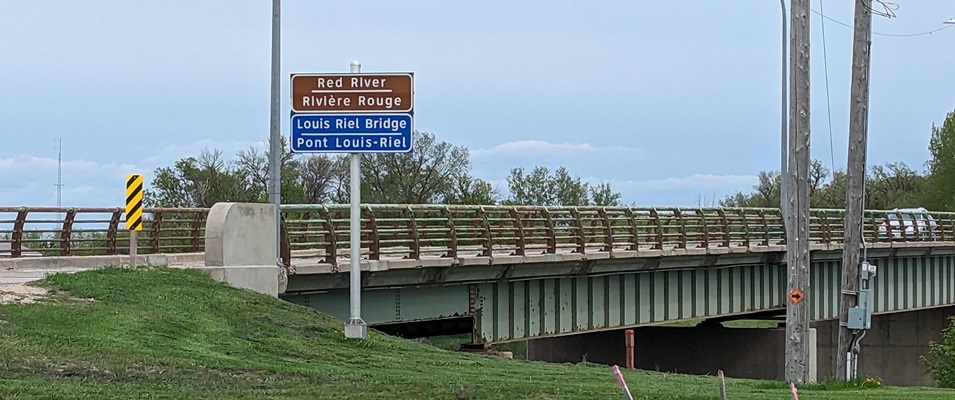
Sixty-five years after the Louis Riel Bridge was first constructed in Ste. Agathe, the community’s iconic Red River overpass is set to undergo a major overhaul. Construction is expected to begin this summer and will be carried out in three phases, spanning two years.
Once complete, the new structure will have rebuilt girders which meet current federal standards, allowing for heavier truck use. As well, the entire deck and railings will be replaced.
In the end, the current narrow lanes will be widened, with shoulders added on either side. The sidewalk bordering the eastbound lane will be separated from traffic by concrete barriers, providing an increased level of safety for pedestrians.
The project’s estimated cost will land between $25 and $30 million. It is anticipated that the new bridge should be ready to withstand another 60 years of use.
Repairs will get underway this summer on the bridge’s substructure. Traffic flow will be maintained as usual throughout this phase.
In the fall, the eastbound lane will be closed to traffic and reconstruction is expected to run for about a year. If everything progresses according to schedule, the westbound lane will begin reconstruction by the fall of 2025.
The bridge will be open to traffic throughout the process, although it’s anticipated to be slowed considerably. Oversized vehicles will be temporarily diverted to Aubigny or St. Adolphe.
Also beginning this fall, Pembina Trail will be closed at the Highway 305 intersection for the duration of the bridge’s reconstruction. The walking trail running beneath the bridge will also be closed.
The crosswalk to the west of the bridge will remain open and the 30 kilometre per hour speed zone will remain in effect year-round until repairs are complete.
Public engagement with Ste. Agathe residents and stakeholders first began in 2021. Two public open houses were initiated by landscape and urban planners in 2021 and later again in 2023.
Stakeholders were also encouraged to complete a questionnaire on the EgageMB site, providing feedback to aid the province in determining what mattered most to the community in terms of the reconstruction process.
Eventually, two designs were presented, along with traffic management options for the construction period. This resulted in feedback from more than 200 respondents, which clearly favoured one over the other.
The other design option provided less sidewalk width and no shoulders adjacent to the traffic lanes. It also had the potential for a quicker construction. However, it would have required approximately 16 weeks of full bridge closure.
The majority of respondents in the public survey indicated that uninterrupted access to the bridge was highly important.
In the end, the final design and traffic management plan has answered all of the community’s primary concerns apart from one: the speed at which traffic currently passes over the bridge.
“The preliminary design could not address this issue,” reads a report from engineering firm WSP, “but Manitoba Transportation and Infrastructure will continue to investigate strategies for traffic calming.”




















